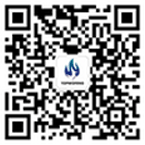
Under the wave of green transformation and technological upgrading in the global manufacturing industry, the laminated board industry is ushering in a new round of development opportunities. As a composite material that combines functionality and decoration, the application of laminated panels continues to expand in fields such as home appliances, construction, and automobiles. Data shows that the global laminated board market is expected to grow at a compound annual growth rate (CAGR) of 5% -10%, and is expected to exceed $20 billion by 2030. China, with 60% of the global market share and technological innovation capabilities, has become the core force driving industry development, while South Korean, Japanese, and European and American companies are competing in the high-end market.
1、 Market size and growth drivers
Demand driven
In the field of home appliances, VCM board has become the preferred material for high-end refrigerators, washing machines, and other home appliance casings due to its high glossiness, corrosion resistance, and diverse design. The global VCM board market for household appliances is expected to reach 783 million US dollars in 2023 and is projected to increase to 1.094 billion US dollars by 2030. Among them, refrigerator applications account for over 50%.
Architecture and Industry: Coated steel plates are widely used in green buildings, and their weather resistance and recyclability drive market demand. It is expected that the production capacity of laminated steel plates in China will reach 1.8 million tons by 2025, and the global demand in the construction industry may increase to 25% by 2030.
Environmental policies and technological upgrades
Environmental regulations in various countries are becoming stricter, promoting the transformation of laminated board production towards water-based coatings and VOCs free emission processes. The tax incentives for green building materials in China's 14th Five Year Plan have accelerated the technological iteration of the industry.
Japanese companies such as DNP have developed high-density glass via (TGV) substrates to enhance semiconductor packaging performance; Absoluts in the United States has received government funding to promote the application of glass substrates in chip packaging.
2、 Regional competition pattern: China and South Korea dominate, Japan, Europe, and America accelerate catch-up
China: Leading in both production capacity and market
Enterprises such as Qingdao Hegang New Materials and Jiangsu Liba Industrial occupy over 50% of the global market share, and the production capacity of laminated steel plates is expected to reach 1.8 million tons by 2025.
Chinese enterprises have made significant breakthroughs in the field of intelligent production, such as automated spraying lines and AI quality inspection systems, which have increased the production efficiency of laminated boards by 30%.
South Korea and Japan: Breakthrough in the High end Market
South Korean companies such as DCM Corp and Samyang Metal are focusing on VCM boards for home appliances, seizing the high-end market through high-precision laminating technology.
Japan's DNP launches "TGV glass core substrate" to achieve 9:1 high aspect ratio through-hole technology, aiming to achieve sales of 5 billion yen by 2030.
Europe and America: Green Technology Research and Development
European companies are accelerating the development of biodegradable film materials, and a German manufacturer has launched bio based PET coated panels, reducing carbon emissions by 40%.
The United States supports local laminated board production through subsidy policies to reduce dependence on the Chinese supply chain.
3、 Industry Challenges and Future Trends
Short term challenges
Cost pressure: Fluctuations in the prices of raw materials such as copper and aluminum have led to increased production costs, and the rise in zinc prices in 2023 has reduced profits for some companies by 15%.
Technical barriers: High end laminated boards (such as ABF film for IC carrier boards) are still monopolized by Japan's Ajinomoto and Mitsubishi, and Chinese companies need to break through yield bottlenecks in high-frequency material mass production processes.
Future Trends
Greening and circular economy: The market share of environmentally friendly laminated boards is expected to exceed 40% by 2030, and recycling and regeneration technology will become the focus of competition.
Intelligence and customization: Digital printing technology promotes personalized design, such as the rapid growth of 3D textured laminated boards in luxury home appliances.
Cross border integration: The combination of laminated panels and the Internet of Things, such as the trial use of intelligent temperature controlled laminated steel plates in new energy vehicle battery compartments, expands industrial scenarios.
The global laminated board industry is currently in a critical period of green transformation and technological innovation. Chinese companies continue to lead with their scale advantages and policy support, while Japanese, Korean, European, and American companies compete for high-end markets through differentiated technologies. In the future, finding a balance between cost control, environmental compliance, and market demand will be the key to business success. With the outbreak of emerging fields such as smart homes and new energy, the application boundaries of laminated boards will be further expanded, becoming an important driving force for the upgrading of the global manufacturing industry.
